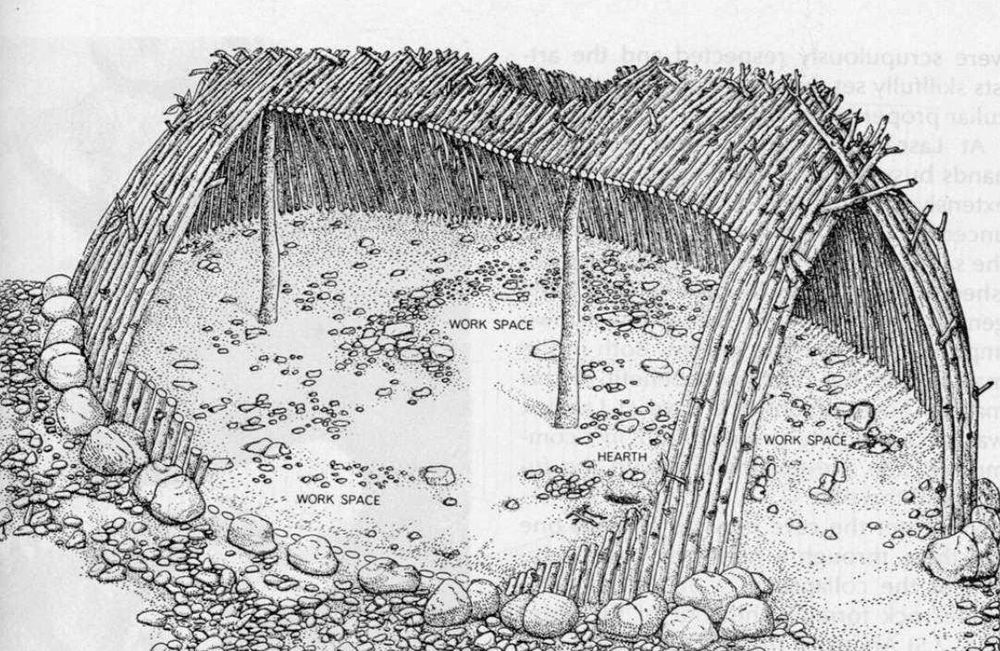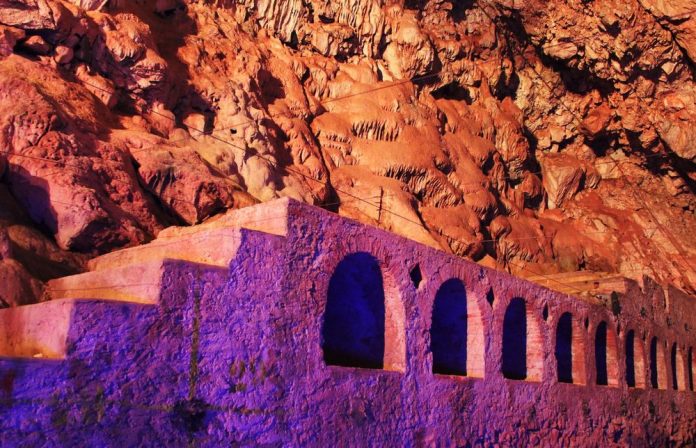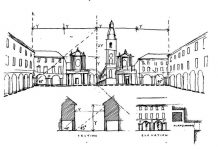Unlike clothes, buildings cannot be squeezed into the back of our closet or taken to the local charity shop when no longer in fashion; they are meant to stay. Not having the chance to design new ones for the upcoming season, architects would like their buildings to withstand the test of time and not be seen as obsolete the day after; owners who pay good money to have the buildings erected expect their investments to have value for as long as possible; and users insist that certain things be done the way they “should” be done, no matter how fascinated by innovative ideas they might be.
This is why the question “are there archetypes in architecture?” has been central to architectural theory throughout the ages, and still retains, to some extent, its validity. An archetype in architecture is a form that we keep reproducing, more or less deliberately, acknowledging therein an irrefutable wisdom and an appeal that may never perish. “Form” is used here in the original sense of the term: as the structure, organization or essential character of something, rather than merely its appearance. An archetype, then, is a paradigm that incorporates what is important and perennial, and as such one that can adapt to specific contemporary requirements over changing times, while maintaining all its primary qualities.
Watching children drawing pictures of their dream homes in the almost stereotypical shape of a small house complete with roof and smoking chimney, one feels as though he/she is witnessing an archetype in architecture. This might well be so. In the remote past, humans evidently used to build huts fairly similar to our own perception of an essential dwelling: the simplest imaginable shelter with a smoking chimney.
In the nineteen-sixties, a team led by Henry de Lumley discovered at the site of Terra Amata in Nice, southern France, vestiges of large huts erected 400,000 years ago—although other scholars doubt his interpretations completely or date the finds tens of thousands of years later; 400,000 years is a long time. The human species, to which the individuals who built the huts belonged, was extinct long ago. Modern humans came to Europe from Africa about 40,000 years ago. The Parthenon was built 2,500 years ago; Leonardo da Vinci conceived his flying machines 500 years ago; and the first underground railway line began operating in London 150 years ago.

De Lumley’s excavations revealed that several meters beneath the current surface of the ground, earth and sand were thinner in texture in some places. He interpreted this as dirt accumulated in holes born by tree branches pinned to the ground; the wood disintegrated over time, but left traces on the walls of the holes, providing further evidence to support his assumptions. The holes, clustered in several groups, were not perpendicular, indicating that the branches converged together forming real roofs. The huts, erected along what would have been the seaside at that time—to offer temporary shelter to humans coming to the area to hunt or fish—were oblong, measuring approximately eight to twelve by four to five meters. At the center of each hut, traces of fire were found; probably at the top an opening was left to let the smoke out. Also uncovered here and there were clusters of similar objects—fragments of stone, animal bones, food remains, etc.—suggesting that the space inside each hut had been organized so that different activities (preparing and cooking food, tool making, sleep, etc.) should take place in distinct zones, similarly to modern dwellings.
Traces of a more recent but still very early dwelling—150,000 years old—were discovered inside a cave only a few kilometers away from Terra Amata. At Grotte du Lazaret, a number of large stones circumscribed an area about 11 meters in length and 3.5 meters in width. While outside this area, finds of human activity are scarce, inside they are abundant: numerous bones, stone tools, and stone fragments have been found, as well as two circular charcoal concentrations that researchers have identified as hearths. This suggests that the stones had supported branches propped up against the wall of the cave, and were layered with animal skins, forming a shelter. Fire residue shows that the proportion of slowto quick-burning logs was considerably higher there than within a radius of several kilometers around the cave.
Its occupants had obviously fairly advanced know-how: they knew that such logs would keep the fire burning low and for longer, making it suitable for keeping the shelter warm. Some finds suggest that the cave was occupied only during the coldest season of the year, when temperatures would fall considerably, particularly at night. Large concentrations of small seashells were uncovered around the hearths. It seems that the occupants of the cave would gather seaweed from the shore, bring it by the fire, and make bedding to sleep more comfortably.
Numerous traces of early human shelters have been unearthed at sites around the globe. Evidently, early humans would often opt for a survival strategy involving what anthropology terms “base camps,” settling temporarily at specific locations. This is where the more vulnerable members of the group would be sheltered during the daytime from rain or scorching sun and predatory animals, while the more vigorous members would go hunting or set out for other endeavors. This is where a fire would be lit; it would keep them warm and they would use it to cook the meat to make it healthier to consume and easier to digest. This is also where they would make most of their tools and where they would sleep at night. The location would be near a source of fresh water and preferably in an area rich in raw materials: stones to make tools, deadwood to build a fire, and fruit and prey to secure food. Ideally, it would also allow dwellers to survey the surrounding grounds. This would make them less vulnerable to surprise attacks and on occasion, it would offer the additional advantage of responding more easily to an attacker, who would have to overcome the difficulty of climbing uphill. Perhaps our inherent affinity for a beautiful view and an open horizon goes back to a self-preservation instinct that we have learned to satisfy by choosing dwellings on elevated locations.
Human building activity enhanced the advantages of favorable geological formations: our ancestors realized that it was worthwhile to spend their energies improving the shelters provided by nature or, if necessary, constructing better ones from scratch.
This activity kept on for ages as we can see, for example, in the case of the huts unearthed in Mezhirich, Ukraine, dated barely 15,000 years ago. Built to protect their inhabitants from the cold winter winds, they were made from a frame of mammoth mandibles, tusks, and other bones, and were probably layered with fur. Erecting them required materials weighing several tons and several days of teamwork. However, they were quite large in order to accommodate sizable groups, whose members obviously worked together to hunt down the mammoths.
As humans had probably been doing for hundreds of thousands of years—and have continued doing since—the people who built the Mezhirich huts made clever use of local materials. Nothing substantial has changed since the huts of Terra Amata or the shelter in Grotte du Lazaret. Neither the concept, nor the overall configuration, nor the allocation of activities to specific spots inside or in the vicinity of the huts is substantially different. In this respect, one can suggest that for at least 400,000 years, and possibly many more—as the 1.75-million-year-old finds unearthed in Olduvai Gorge in northern Tanzania seem to indicate—there were no crucial changes in the way we used to build our dwellings.
By contrast, progress has been colossal in other fields of human activity. The sharp follicles and the sharp-edged “axes” manufactured for a variety of uses 2.5 million years ago have gradually given way to more sophisticated tools. Humans were able to produce a wide range of extremely specialized tools made of stone and animal bone—from needles and hooks to javelin spears and knives—250,000 years before our time (that is, long before Mezhirich).
Ritual disposal of the dead marks another turning point in human history, since it is a strong (but neither sufficient nor necessary) indication of a developed self-consciousness and concern with metaphysical questions: what are we, what happens when we die, etc. The earliest burials possibly date back to at least 100,000 BCE and were practiced in parallel by both anatomically modern humans and the Neanderthals, who coexisted with the former for a period of time.
Then there is the development of art. Musical instruments date back at least 35,000 years. Depictions of the real or some fictitious world also date back tens of thousands of years ago. Such items of craftsmanship were not used in tasks directly associated with securing food, keeping the fire alight, or building dwellings, so in some sense they were redundant; the evidence though suggest that they were nevertheless indispensable for the highly sociable Homo sapiens sapiens species: in the modern world, there is not one known community of people, not one tribe or group who do not spend vast amounts of their energy to create such “not-of-direct-use” artifacts.
Early art is largely found deep inside caves at relatively inaccessible areas, hardly ideal for a comfortable viewing. Art such as the 15,000-year-old cave paintings of Lascaux, southern France, may be labeled as secretive and its purpose may well have been to control nature with methods nowadays considered as witchcraft; however, it was the product of extremely skilled labor. Additionally, there were probably also art forms directly involving all community members, as suggested by today’s widely spread practice of body ornamentation, which is performed mainly for ritualistic purposes, to express the established social order, or to indicate and confirm a tribal identity. Decoration of the temporary dwellings humans used to build—which is marginal to proper architecture—may have been also practiced, although no evidence thereof has surfaced so far.
Evidently, all of these non-utilitarian artifacts were not useless altogether. They helped to maintain social coherence, to encourage individual development, and to enhance the awareness of belonging to an organized, productive, and creative group or community. This would certainly have made the group or the community stronger and would offer it an advantage in the increasingly competitive world they inhabited.
Arguably more than any other living being, humans do not just adapt to their environment; they also constantly try to change it to their advantage. By improving natural shelters and building huts, humans established themselves in areas that until then had been off limits—a major contribution of “architecture” (if we may call it that) in shaping the world as we know it. Such constructions offered rudimentarily controlled environmental conditions, plus some security; and may have also been good enough to be imbued, when such need emerged, with some kind of symbolism associated with both their form and use of space within or around them, as we can deduce from archaeological or ethnographic parallels—i.e., comparable contemporary cultures—as is the ritual segregation of space in modern-day yurts. This meant that they offered their occupants relief from hardship and would help them increase their chances of survival; they may also have provided them with an additional psychological advantage—peace of mind. Evidently, humans need a roof over their heads, unlike other primates. Gorillas and chimpanzees build their nests on trees every night anew: they bend a few branches, they entwine them with other smaller twigs, they stamp on them with the outer part of their extremities to make the surface smoother, and within a few minutes time, they have built a cradle-like shelter.
While humans developed tools, rites presumably associated with heightened self-consciousness, and, more recently, art, they did not improve their dwellings. There might have been attempts to do so, but they were evidently not worthwhile enough to be followed. The extra effort and energy required to invest in improving dwellings was to no avail: the concluding result did not offer the occupants an advantage strong enough to offset the losses that such investment inflicted. Evolution-wise, any development in “architecture” seems to have been of no use to humans. For years and years, the human need for a shelter was met in most parts of the globe by temporary structures with a frame made of rigid materials and layered with vegetable matter or animal skins, or variations thereof.
All finds suggest that this went on until humans started to settle down in specific locations, which only happened in the very recent past. This is when things changed. This is when investing in dwellings considerably more solid and secure than those that had been built for hundreds of thousands of years began to pay out. Shelters became more permanent and were made of new materials. They controlled climate conditions in their interior more effectively and offered better security against intruders; moreover, they symbolized the appropriation claims made by the settled communities of the land they had built on in a way that everyone could understand. This was a complete package.
New materials began to be used, which were rather inadequate for the temporary shelters humans were building up to that time. Of those, clay was the most popular, a soil rich in argil. Mixed with water, it was easy to mold, whereas left out to dry in the sun it became rigid. Usually reinforced with vegetable matter such as straw and mixed with sand, clay was used in a variety of construction techniques: to cover and waterproof “walls” made of shoots, thin bamboo, and straw that filled in the gaps between the load-bearing branches of a typical frame construction; ladled on stone foundations in successive layers; in the form of sun-dried bricks; and many more variations. Timber, in the form of whole tree trunks and wooden poles, was also used increasingly. The new building techniques changed the configuration of dwellings: walls became vertical, which created more space in the interior. However, the basic concept remained unchanged, as suggested by a 7,000-year-old small clay model of a dwelling found in Thessaly, central Greece: a roof over the heads of people; usually pitched, more rarely flat.
A few thousand years after the new form of dwelling—permanently built shelters—was well established, another chapter in cultural history opened: the object and role of building changed radically. Human communities became, relatively suddenly, much more complex than they had been for hundreds of thousands of years. These communities started to devise increasingly refined vehicles to achieve coherence. One of these vehicles was the construction of non-utilitarian, monumental edifices. Thus, the answer to the question “are there archetypes in architecture?” must be sibylline.
If architecture denotes the purposeful and conscious act of changing our environment by constructing shelters that serve for the immediate survival of humans, as individuals and as a species (Oscar Wilde points out that “if nature had been comfortable, mankind would never have invented architecture”, then the archetypal building is a hut like that of Terra Amata: a construct that, in the first place, offered them a roof over their heads; and onto which, from some point onward, they could also project their world view. Huts have been built since time immemorial, and are still being built today. Tellingly, huts have captured the imagination and have had a crucial part in the folk traditions and religious ceremonies of different peoples—some of whom had developed meanwhile extremely advanced architecture, including the Egyptians, the Greeks, and the Japanese—and have been architecture’s sacred cow since Vitruvius, the forefather of our discipline’s theoreticians.
If architecture primarily denotes the construction of edifices whose role is ultimately very similar, in terms of evolution, to that of art—i.e., that of a vehicle for enhancing social coherence, and that’s what architecture has evolved into in the past few thousand years—then it is hard to single out an archetypal building, only various crude models that stand out locally or regionally for limited time. As we will see, the means architecture uses to respond to its duties have changed again and again over time to such extent that no form has managed to claim a secure place in our consciousness and in our unconsciousness. Religious edifices and tombs, residences and palaces have all assumed every possible shape; they were made tall as well as flat, serene as well as impressive, excessively decorated as well as solemn.
The only building that has retained its archetypical form for hundreds of thousands of years—despite its diversity through the ages and across the globe—is the primordial dwelling, the hut. Nonetheless, it would not be far off the point to claim that the basic features of this archetypical construct partake in every edifice we erect, that they are being reproduced each and every time we begin to build. The bottom line is that the hut is an archetype we keep imitating in its essence without even intending to do so …



















